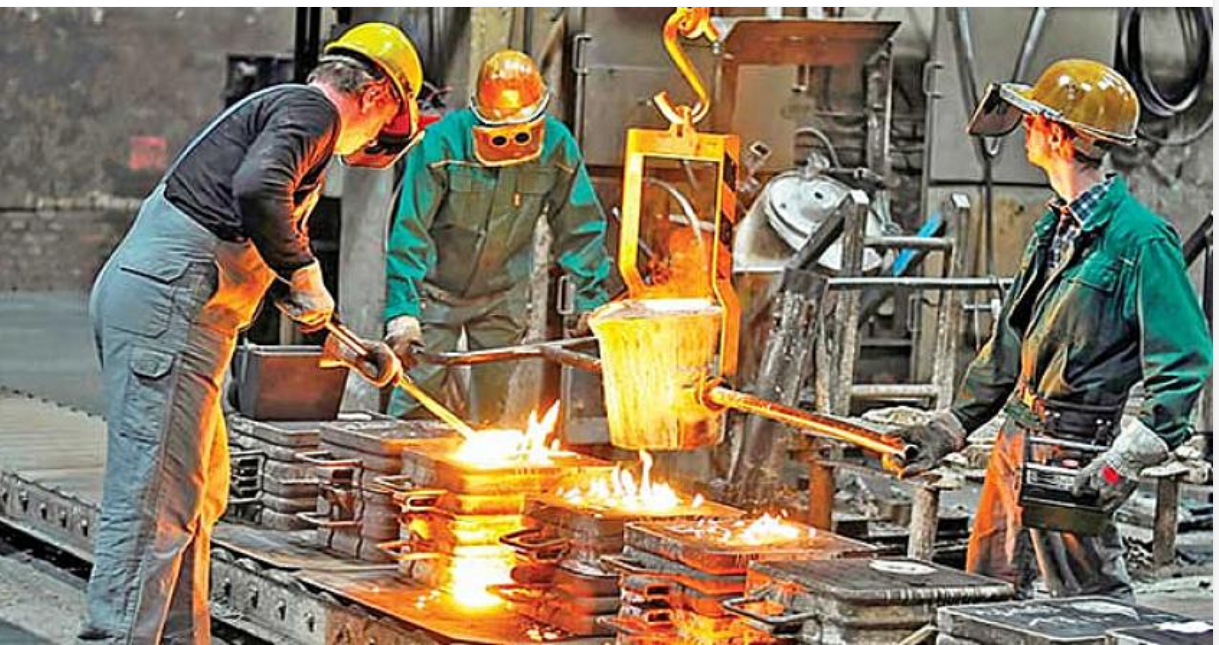The contraction in industrial production continued in October with visible sectoral differences. While seasonally adjusted industrial production contracted by 0.4% in October (September: -0.1%, August: -0.8%), the manufacturing industry production index, which excludes mining and energy production, contracted by 0.3% (September: +%0.1, August: -1.2%). The market expectation was for a 0.2% contraction, and IS Invest’s forecast was for no change.
According to calendar adjusted data, industrial production is in the expansion zone with an annual increase of 1.1% (September: 4.1%, August: 3.1%). When we look at the same rate for the manufacturing sector, annual growth increases to 1.3% (September: 3.8%, August: 1.8%).
The announced data draws a picture that is compatible with the S&P Global ISO manufacturing PMI (48.4), but contradicts the recovery in the MÜSİAD industry SAMEKS (50.8) index. (SAMEKS is monthly PMI index compiled by MUSIAD conservative businesspeople association) . The divergence between the two indicators becomes more evident in November.
Looking at the monthly growth in broad groups, durable goods continued to recover with a growth of 3.2% (September: 2.2%, August: -3.3%), while energy production increased by 0.6% (September: -2.4%) , August: 2.3%). Capital goods production moves into the contraction zone again with -1.0% (September: 2.2%, August: 0.0%). Non-durable consumer goods continued to contract by -0.7% (September -0.7%, August: -2.2%).
October PMI figures pointed out a contraction that was more severe and widespread than the previous month, with a contraction in all sectors except food. High volatility and sectoral diffusion are noteworthy in TURKSTAT production data.
Leading indicators produce conflicting signals for November. Istanbul Chamber of Industry PMI (47.2) index, with a decrease of 1.2 points, signals contraction and sharpening sectoral divergences. MÜSİAD industry SAMEKS index (52.2), on the other hand, is rising in the expansion zone with an increase of 1.4 points. SAMEKS production sub-index (50.4) is in the expansion zone again with an increase of 3.3 points. In November data, manufacturing industry capacity utilization rate increased, real sector confidence index went in the opposite direction, making assessing trends difficult.
When we look at the PMI production sub-index sectors for November, we see that three of the ten sector groups (land-sea vehicles, machinery metal, food, non-metallic minerals) signal expansion, and the machinery-fabrication metal group is close to the optimism threshold. On the other hand, the clothing, textile, basic metal and furniture sectors are in the deep contraction zone.
Results similar to PMI sectoral details are seen in TIM (Turkish Exporters’ Assembly) November preliminary export data. While exports of the automotive, shipbuilding and petrochemical sectors increased in November, they decreased in the textile, clothing and steel sectors.
Despite the weak industrial production data, we do not change our growth forecasts of 4.3% for 2023 and 3.0% for 2024 for now. Although the economy is gradually slowing down, what really attracts attention is the widening gap between the performance of leading industry segments.
Is Invest research note
Follow our English language YouTube videos @ REAL TURKEY: https://www.youtube.com/channel/UCKpFJB4GFiNkhmpVZQ_d9Rg
And content at Twitter: @AtillaEng
Facebook: Real Turkey Channel: https://www.facebook.com/realturkeychannel/
